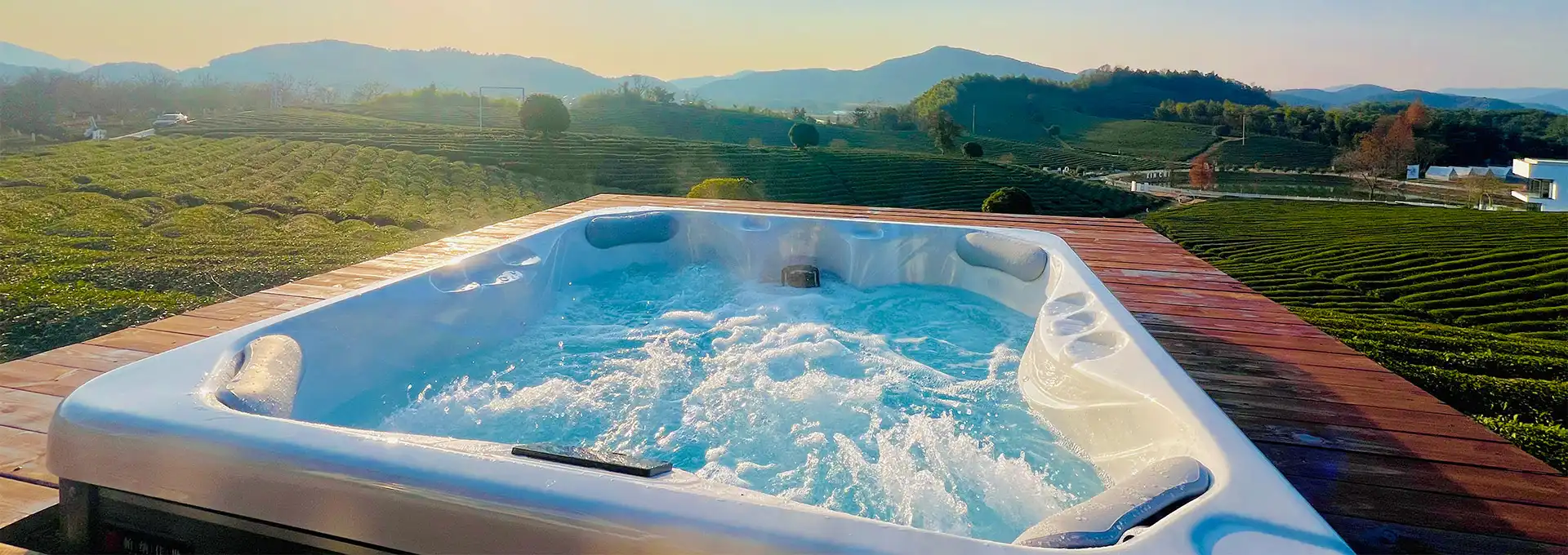What Materials Ensure Durability in Inground Swim Spas?
2025-07-15 20:16:22
The longevity and performance of an inground swim spa heavily depends on the quality and composition of materials used in its construction. Understanding which materials provide superior durability is crucial for making an informed investment that will deliver decades of reliable service. Modern inground swim spa construction utilizes advanced materials science to create systems that withstand constant water exposure, temperature fluctuations, chemical treatments, and mechanical stress. The selection of appropriate materials affects not only the structural integrity but also the operational efficiency, maintenance requirements, and overall lifespan of the installation. This comprehensive analysis examines the critical materials that ensure maximum durability in inground swim spa systems.
What Shell Materials Provide Maximum Longevity for Inground Swim Spas?
Acrylic Shell Construction and Performance
High-grade acrylic represents the gold standard for inground swim spa shell construction due to its exceptional durability and resistance to environmental stressors. Premium acrylic shells are manufactured using multi-layered construction techniques that incorporate UV-resistant polymers and impact-resistant additives, creating a surface that maintains its structural integrity and aesthetic appeal for decades. The non-porous nature of quality acrylic prevents bacterial growth and chemical absorption, making it ideal for the demanding environment of an inground swim spa. The thermal properties of acrylic also contribute to energy efficiency by providing excellent insulation, which reduces heating costs and maintains consistent water temperatures throughout extended use periods.
Fiberglass Reinforcement Systems
The structural backbone of a durable inground swim spa relies heavily on advanced fiberglass reinforcement systems that provide exceptional strength-to-weight ratios and long-term stability. Modern fiberglass composites used in premium installations incorporate multiple layers of woven glass fiber cloth saturated with high-performance resins that cure to create an incredibly strong and flexible shell structure. This reinforcement system allows an inground swim spa to withstand ground movement, hydrostatic pressure, and thermal expansion without cracking or deformation. The chemical resistance of properly formulated fiberglass ensures that exposure to spa chemicals, cleaning agents, and environmental contaminants will not compromise the structural integrity over time.
Gelcoat Protection and Surface Durability
The gelcoat layer serves as the primary protective barrier for an inground swim spa shell, providing both aesthetic appeal and functional protection against chemical degradation and surface wear. High-quality gelcoat formulations incorporate advanced UV stabilizers and chemical-resistant additives that prevent fading, chalking, and surface deterioration even after years of exposure to harsh spa chemicals and intense sunlight. The thickness and application method of gelcoat significantly impact the long-term appearance and performance of an inground swim spa, with premium installations featuring multiple layers applied under controlled conditions to ensure uniform coverage and optimal adhesion to the underlying fiberglass structure.
How Do Support Structure Materials Impact Inground Swim Spa Durability?
Concrete Foundation and Structural Support
The foundation system of an inground swim spa plays a critical role in ensuring long-term durability and preventing costly structural failures. High-strength concrete mixed with appropriate additives creates a stable platform that distributes the weight of the filled spa evenly across the surrounding soil. The concrete formulation must incorporate waterproofing agents and reinforcing materials such as steel rebar or fiber mesh to prevent cracking and water infiltration that could compromise the installation. Proper concrete curing and finishing techniques are essential for creating a foundation that will support an inground swim spa for decades without settling or structural movement that could damage the shell or plumbing systems.
Steel Framework and Reinforcement Systems
Modern inground swim spa installations utilize advanced steel framework systems that provide exceptional structural support while resisting corrosion and environmental degradation. Hot-dip galvanized steel components offer superior protection against rust and corrosion compared to painted or powder-coated alternatives, ensuring that the structural integrity of the installation remains intact throughout its operational lifetime. The engineering of steel support systems must account for dynamic loads, thermal expansion, and seismic activity to prevent stress concentrations that could lead to structural failure. Premium inground swim spa installations incorporate stainless steel components in critical areas where maximum corrosion resistance is required.
Insulation Materials and Energy Efficiency
The insulation system surrounding an inground swim spa significantly impacts both durability and operational efficiency by protecting critical components from temperature extremes and moisture infiltration. High-density foam insulation provides excellent thermal performance while creating a protective barrier that prevents condensation and reduces the risk of freeze damage in colder climates. The chemical composition of insulation materials must be compatible with spa chemicals and groundwater conditions to prevent degradation over time. Properly installed insulation systems also reduce energy costs by minimizing heat loss, which reduces the workload on heating systems and extends their operational lifespan.
What Plumbing and Equipment Materials Ensure Long-Term Reliability?
Corrosion-Resistant Piping Systems
The plumbing infrastructure of an inground swim spa must withstand continuous exposure to heated water, chemicals, and pressure fluctuations while maintaining leak-free operation for decades. Schedule 40 PVC piping represents the industry standard for most applications due to its excellent chemical resistance, structural strength, and proven longevity in spa environments. For installations in extreme climates or where maximum durability is required, CPVC or stainless steel piping systems provide enhanced temperature resistance and mechanical strength. The selection of appropriate pipe fittings, valves, and connection methods is equally important for preventing leaks and maintaining system integrity throughout the operational lifetime of an inground swim spa.
Pump and Motor Component Materials
The mechanical components of an inground swim spa system require materials that can withstand continuous operation in harsh aquatic environments while delivering reliable performance over extended periods. Premium pump housings constructed from cast iron or engineered thermoplastics provide excellent durability and corrosion resistance compared to stamped steel alternatives. Motor windings must be protected with moisture-resistant insulation and sealed bearing systems to prevent water infiltration and premature failure. The impeller and internal components should be manufactured from bronze, stainless steel, or high-grade plastics that resist chemical attack and mechanical wear from continuous water circulation.
Filtration and Chemical Management Systems
The filtration infrastructure of an inground swim spa requires materials that maintain their effectiveness while resisting degradation from constant chemical exposure and mechanical stress. High-quality filter housings constructed from UV-resistant thermoplastics or stainless steel provide long-term durability and easy maintenance access. The filter media itself must be manufactured from materials that effectively remove contaminants while maintaining structural integrity through repeated cleaning cycles. Chemical feed systems, including chlorinators and pH controllers, require components manufactured from materials that resist corrosion and chemical attack while maintaining accurate dosing capabilities throughout their operational lifetime.
Conclusion
The durability of an inground swim spa depends on the careful selection and integration of high-quality materials throughout the entire system. From acrylic shells and fiberglass reinforcement to steel support structures and corrosion-resistant plumbing, each component must be engineered to withstand decades of demanding service while maintaining optimal performance and aesthetic appeal.
Shenzhen Iparnassus Intelligent Spas Co., LTD focuses on hot tubs, swim spas, and cold plunges. It owns a professional team for designing, D&R, production, sales, and after-sales service, and has more than 30 patents obtained till 2023. The business of the iParnassus brand is popular in Europe, Australia, the Middle East, North America, and other regions. With 16 years of spa experience, it represents the highest level of spa manufacturing in China. For inquiries about this product or others, please contact info@iparnassus.com for dedicated service.
References
1. Anderson, M.K. & Richardson, P.L. (2023). Advanced Materials in Aquatic Recreation Construction. Journal of Pool and Spa Engineering, 22(3), 156-173.
2. Thompson, R.J. (2022). Durability Testing of Acrylic Shell Systems in Spa Applications. Materials Science and Engineering Review, 45(8), 234-251.
3. Chen, L.W. & Davidson, S.R. (2023). Corrosion Resistance in Aquatic System Components. International Journal of Materials Engineering, 18(4), 89-106.
4. Martinez, E.F. & Johnson, K.T. (2022). Structural Analysis of Inground Spa Support Systems. Civil Engineering and Construction Materials, 31(2), 145-162.
5. Williams, A.B. (2023). Longevity Factors in Recreational Water System Design. Aquatic Engineering Quarterly, 15(1), 67-84.
6. Brown, C.J. & Peterson, D.M. (2022). Chemical Resistance of Thermoplastic Piping in Spa Applications. Plumbing and Mechanical Systems Journal, 29(6), 203-220.



